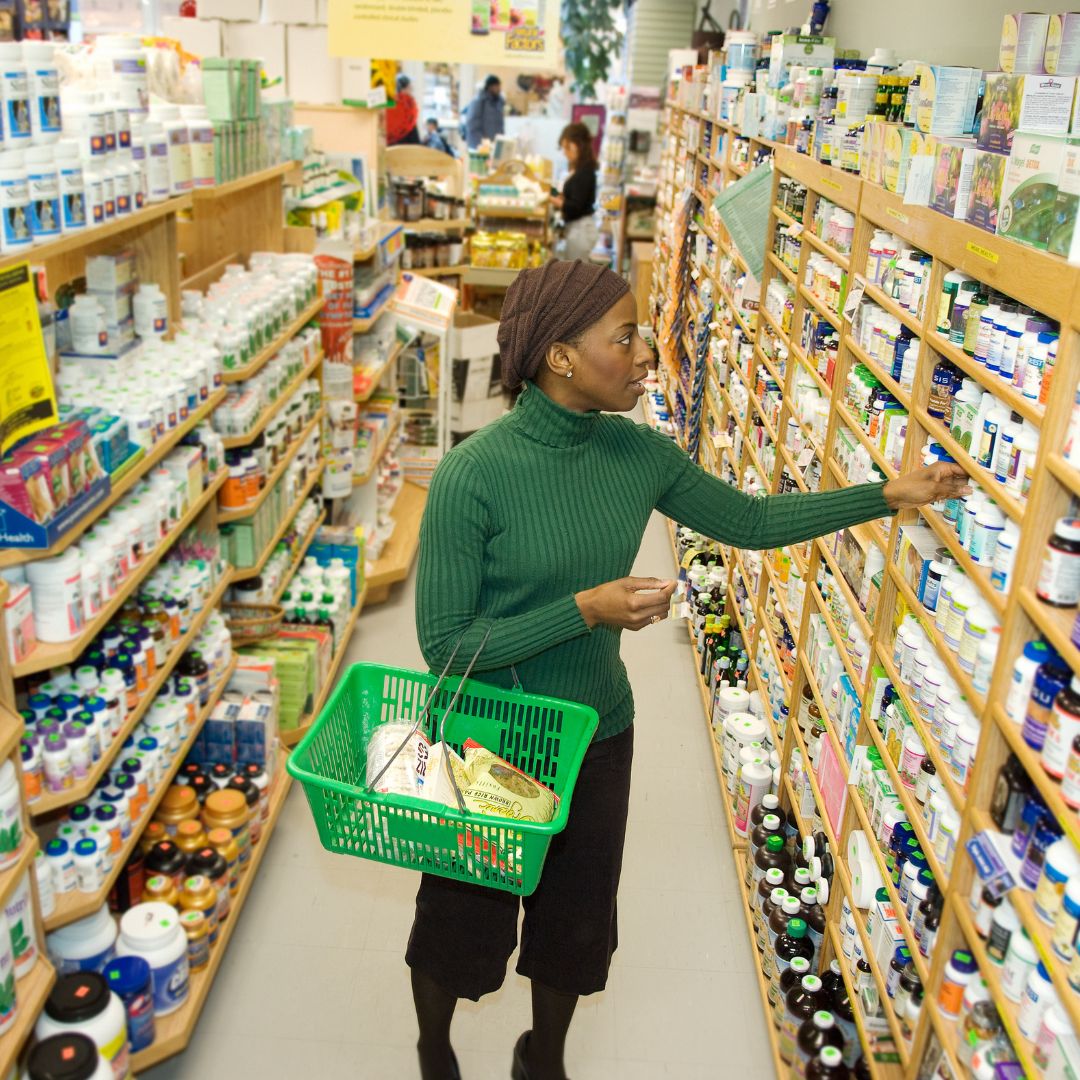The Four Purchase Intents of Health Care Consumers 6/29/2022
 Curating your product assortment based on consumer shopping behavior leads to customer satisfaction and loyalty, and this improved satisfaction and loyalty leads to sales. Through research conducted in 2018, Hamacher Resource Group discovered that pharmacy and health care customers could be grouped into four different purchase intents. These include: Committed to Wellness, Road to Recovery, Living Vitally, and Caring for Loved Ones.
Curating your product assortment based on consumer shopping behavior leads to customer satisfaction and loyalty, and this improved satisfaction and loyalty leads to sales. Through research conducted in 2018, Hamacher Resource Group discovered that pharmacy and health care customers could be grouped into four different purchase intents. These include: Committed to Wellness, Road to Recovery, Living Vitally, and Caring for Loved Ones.
Based on which of the four “journeys” shoppers are on, there are different toolsets and approaches that will help attract and retain these shoppers. Below we examine each of these purchase intents, and provide recommendations of actions to take to best address them.
Committed to Wellness
About three in 10 shoppers suggested their primary reason for shopping on the day they were interviewed was to remain healthy. Their focus centered on categories such as vitamins and dietary supplements, medical monitoring devices, and probiotics. Given the recent worldwide pandemic, one could surmise that this percentage of shoppers likely increased, thus creating significant demand in the categories mentioned, along with masks, hand sanitizer, and other personal protective products.
This group of shoppers favored self-navigation and informational signage that described the benefits of various wellness-oriented products. Their primary sources of information included the Internet, families and friends, and prior experience with the products.
Actions to take
Stock a full array of immunity, vitamin, and nutrition supplements, lifestyle monitors, exercise aids, and other nutritionals. Use aisle navigation tools in brick-and-mortar environments and thoughtful filtering online to guide consumer choice (with benefits!).
Road to Recovery
This group of respondents — approximately two in five of consumers surveyed — indicated their shopping purpose centered on recovering from a short-term or specific ailment with anticipated full recovery. Examples may include those suffering from seasonal flu, recovering from a surgical procedure, or a health occasion such as pregnancy that required care before, during, and after such an event.
Respondents indicated interest in consulting the pharmacist or other pharmacy team members for advice while in the store, as well as relying on information provided by their physician. While in the store, this group of shoppers were most likely to add ancillary items to their basket if the result was a more complete solution.
Actions to take
Group items by need state (consider how items from different departments will be used as part of a full recovery treatment plan). Partner with local hospitals and out-patient surgical centers to determine the types of products that may be required and prominently stock and display them. Use concise messaging to position your pharmacy as a go-to resource for recovery.
Living Vitally
Twenty-six percent of those surveyed were living with a chronic condition and visiting the pharmacy to effectively manage their health. Recognizing the importance of this loyal and regimen-oriented group of shoppers can offer significant opportunity on both the prescription and non-prescription categories.
The majority of those shopping were primarily visiting the pharmacy on the day they were surveyed to pick up a prescription. However, this group relies on easy-to-navigate shelves and the advice of the pharmacist to locate the items they are seeking to meet their specific health-related needs.
Actions to take
Offer counseling to these patients who likely use over-the-counter items to assist in their management or treatment. Focus on those conditions most prevalent across your patient base and become their trusted healthcare partner.
Caring for Loved Ones
Approximately one in four of shoppers interviewed responded that they were caring for a loved one — generally one generation up. Recognizing that this individual shopper may not be consuming or using the products they are purchasing, they generally shopped with a specific list including proven products preferred by their loved one. At the same time, this individual may be shopping for themselves and purchasing items that help them remain healthy, overcome aches and pains, or offer them specific relief.
Relying heavily on the pharmacist for product suggestions, counseling, and resource recommendations, this individual is typically not a trained healthcare professional, thus maintaining a trusting relationship is imperative. They did not linger in the store and indicated a desire to get the items they needed as quickly as possible.
Actions to take
Compassionately communicate your commitment to being these shoppers’ ally in caring for their loved one. Stock products they rely on you for as well as daily living items that can make their and their loved one’s lives easier. Add efficient and convenient pick-up or delivery services. Do all you can to provide ongoing support.
Across the retail pharmacy, there are products, information, and navigational tools that can support each of these four journeys. Ensuring the right products are stocked in the right place at the right time will lead to increased loyalty and larger market baskets.
Don't Miss the HRG Panel Discussion at ECRM's Health Care Session!
As consumer selfcare becomes increasingly ubiquitous and integrated, the role of over-the-counter medications, vitamins & dietary supplements, and other healthcare items are evolving into one that may not even be recognized by today’s standards. There has undoubtedly been a convergence of health and wellness. Now, more than ever, consumers are relying on cost-effective, over-the-counter medications to address their health-and-wellness needs. This presents an encouraging opportunity for brands, retailers, and consumers.
During ECRM's Health Care session, which runs August 1 to 5, HRG will present a panel discussion titled, "Consumer Healthcare Trends – The Shape of the Future." This discussion will delve into the following topics shaping items across the healthcare spectrum:
- SKU rationalization and optimization
- Product innovation trends
- Category performance indicators
- Mergers & acquisitions
Plan to join the conversation on August 2nd to get an insider’s view of what’s shaping category assortment, driving shopper behavior, and accelerating the selfcare movement.
Panelists include:
- Angela Pinkstaff, Director of Business Development, HRG
- Kyle Lentz, Category Analyst, HRG
- Donna Boulieu, Senior Product & Strategic Pricing Analyst, HRG
The panel will be moderated by Dave Wendland, VP Strategic Relations, HRG





Dave Wendland is a 30-year veteran of the consumer-packaged goods industry and is passionate about optimizing results across the retail supply chain. As VP, strategic relations and one of the co-owners of Hamacher Resource Group, Dave has connected, counseled, and offered business-improvement solutions to a variety of manufacturers, distributors, retailers, and technology providers. With his bird’s-eye view of retail, he quickly assesses and offers creative ideas to help companies of all sizes.